Temperature changes are a frequent companion of diseases. Why, in most cases, it is not necessary to bring down the temperature and how to remove the fever, if necessary?
What to do with fever is one of the most common questions for physicians and pediatricians. Indeed, fever often frightens patients. However, are increased values \u200b\u200balways a reason for panic? Under what conditions does the temperature hold, and under what diseases does it, on the contrary, fall? And when is antipyretic really needed? What temperature should be normal in children and the elderly? MedAboutMe understood these and many other questions.
Body temperature in adults
Thermoregulation is responsible for human temperature - the ability of warm-blooded organisms to maintain a constant temperature, reduce or increase it if necessary. The hypothalamus is primarily responsible for these processes. However, today scientists are inclined to believe that it is wrong to define a single center of thermoregulation, because many factors affect a person's body temperature.
In childhood, the temperature changes under the slightest influence, while in adults (starting from 16-18 years old) it is quite stable. Although, it also rarely keeps on one indicator all day. Physiological changes are known that reflect circadian rhythms. For example, the difference between normal temperature in the morning and in the evening in a healthy person will be 0.5-1.0 ° C. A characteristic increase in fever in the evening hours in a sick person is also associated with these rhythms.
The temperature can change under the influence of the external environment, increase with physical exertion, the intake of certain foods (especially often after spicy food and overeating), during stress, a feeling of fear and even intense mental work.
What temperature should be normal
Everyone knows the value of 36.6 ° C. However, what temperature should actually be normal?
The figure 36.6 ° C appeared as a result of research carried out by the German physician Karl Reinhold Wunderlich in the middle of the 19th century. Then he made about 1 million temperature measurements in armpit in 25 thousand patients. And 36.6 ° C was just the average of a healthy person's body temperature.
By modern standards, the norm is not a specific figure, but a range from 36 ° C to 37.4 ° C. Moreover, doctors recommend periodically measuring the temperature in a healthy state in order to accurately know the individual values \u200b\u200bof the norm. It should be borne in mind that with age, the body temperature changes - in childhood it can be quite high, but decreases by old age. Therefore, an indicator of 36 ° C for an elderly person will be the norm, but for a child it can talk about hypothermia and a symptom of the disease.
It is also important to consider how the temperature is measured - the values \u200b\u200bin the armpit, rectum or under the tongue can differ by 1-1.5 ° C.
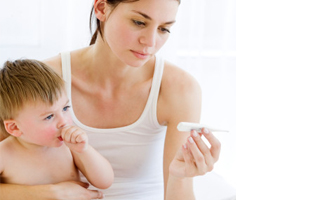
Fever is highly dependent on hormonal activity and therefore it is not surprising that pregnant women often experience fever. Hormonal changes are associated with hot flashes during menopause and temperature jumps during menstruation.
It is very important for expectant mothers to closely monitor their condition, while realizing that slightly increased or low temperature during pregnancy - the norm for most women. For example, if the values \u200b\u200bdo not exceed 37 ° C in the first weeks, and there are no other symptoms of malaise, then the condition can be explained by the activity of female sex hormones. In particular, progesterone.
And yet, if the temperature during pregnancy lasts for a long time, then even subfebrile values \u200b\u200b(37-38 ° C) should be a reason for consulting a doctor. With such a symptom, it is important to be examined and tested in order to exclude the presence of such infections - cytomegalovirus, tuberculosis, pyelonephritis, herpes, hepatitis and others.
Fever during pregnancy can also be a sign of common seasonal SARS. In this case, it is very important not to self-medicate, but to see a doctor. If a common cold is unlikely to pose a danger to the fetus, then the flu can lead to serious consequences, up to a miscarriage by early dates... With flu, the temperature rises to 39 ° C.
Child's temperature
The thermoregulation system in children under 1 year old has not yet been established, therefore, the temperature of a child can change significantly under the slightest influence. This is especially true for babies in the first three months of life. Most often, parents are worried about increased values, however, the reasons for a temperature of 37-38 ° C can be:
- Clothes that are too warm.
- Cry.
- Laughter.
- Food intake, including breastfeeding.
- Swimming in water above 34-36 ° C.
After sleep, the values \u200b\u200bare usually lower, but with active games, the child's temperature rises quickly. Therefore, when making measurements, you need to take into account all external factors that could affect them.
However, it is still too heat (38 ° C and above) may be hazardous to young children. To compensate for the heat, the body expends a lot of water and therefore dehydration is often observed. Moreover, in a child, this condition occurs faster than in an adult. Dehydration can pose a danger to health (often against its background there is a deterioration in the condition, subsequently complicated by pneumonia) and life (with severe dehydration, there can be loss of consciousness and even death).
In addition, some children under 5 years of age have febrile seizures - when the child's temperature rises to 38-39 ° C, involuntary muscle contractions begin, and short-term fainting is possible. If at least once this condition was observed, in the future, even with a slight heat, the baby needs to bring down the temperature.
Human temperature
Normally, a person's temperature is controlled by the endocrine system, in particular, the hypothalamus and thyroid hormones (T3 and T4, as well as the hormone TSH, which regulates their production). Sex hormones affect thermoregulation. Nevertheless, infections remain the main reason for the rise in temperature, and too low a temperature in most cases is caused by overwork or lack of vitamins, micro- and macroelements.
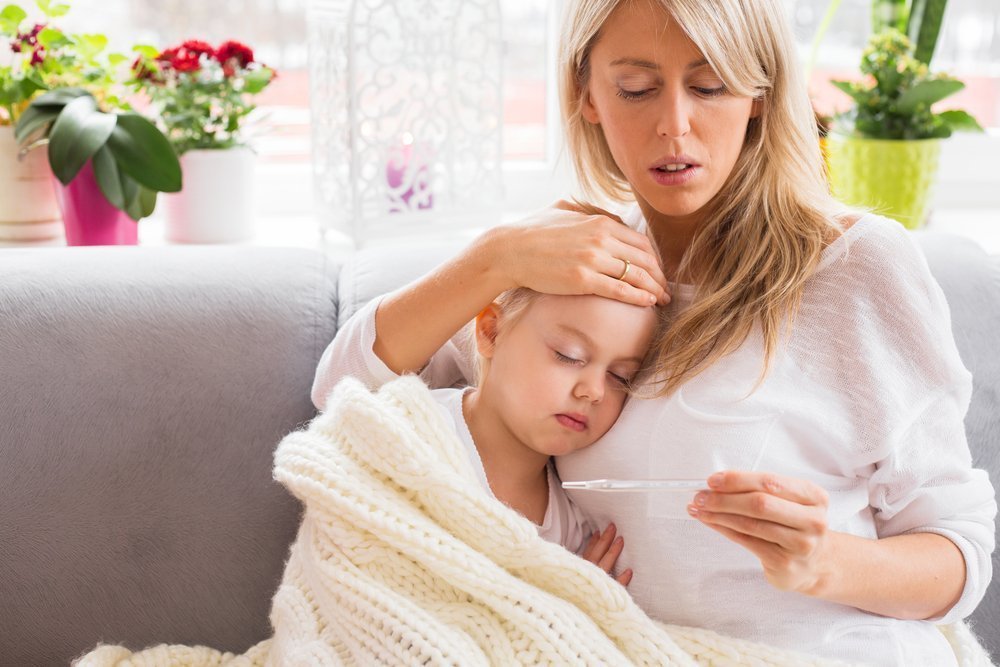
Man is a warm-blooded creature, which means that the body can maintain a stable temperature regardless of environmental factors. At the same time, in severe frost, the overall temperature decreases, and in heat, it can rise so much that a person will receive heatstroke. This is due to the fact that our body is quite sensitive to thermal changes - changes of only 2-3 degrees in temperature significantly affect metabolic processes, hemodynamics and transmission of impulses through nerve cells. As a result, blood pressure may rise, convulsions and confusion may occur. Frequent symptoms of low temperature are lethargy, at a value of 30-32 ° C there may be loss of consciousness; and high - delusional states.
Types of elevated temperature
For the vast majority of diseases occurring with an increase in temperature, certain ranges of values \u200b\u200bare characteristic. Therefore, it is often enough for a doctor to make a diagnosis to know not the exact value, namely the type elevated temperature... In medicine, there are several types of them:
- Subfebrile - from 37 ° C to 38 ° C.
- Febrile - 38 ° C to 39 ° C.
- High - over 39 ° C.
- Dangerous for life - the border of 40.5-41 ° C.
Temperature values \u200b\u200bare evaluated in combination with other symptoms, since the degree of heat does not always correspond to the severity of the disease. For instance, subfebrile temperature observed in such dangerous diseases as tuberculosis, viral hepatitis, pyelonephritis and others. A particularly alarming symptom is a condition in which a temperature of 37-37.5 ° C is kept for a long time. This may indicate disruption of the endocrine system and even malignant tumors.
Fluctuations in normal body temperature
As already mentioned, the normal temperature in a healthy person can change throughout the day, as well as under the influence of certain factors (food, physical activity, etc.). In this case, you need to remember what temperature should be in different ages:
- Children under one year old - a temperature of 37-38 ° C can be considered the norm.
- Up to 5 years - 36.6-37.5 ° C.
- Adolescence - strong temperature fluctuations are possible associated with the activity of sex hormones. Values \u200b\u200bstabilize in girls at 13-14 years old, in boys, drops can be observed up to 18 years old.
- Adults - 36-37.4 ° C.
- Seniors over 65 - up to 36.3 ° C. A temperature of 37 ° C can be considered a serious febrile condition.
In men, the average body temperature is lower by an average of 0.5 ° C than in women.
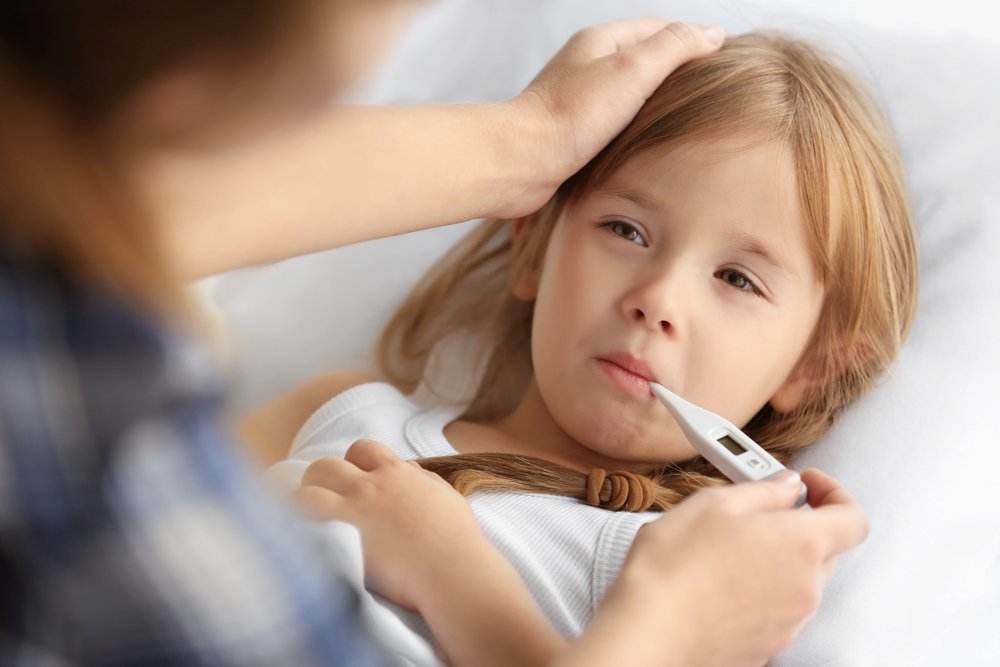
There are several ways to measure body temperature. And in each case there will be their own norms of values. Among the most popular methods are:
- Axilarly (in the armpit).
In order to obtain accurate values, the skin must be dry, and the thermometer itself must be pressed tightly enough to the body. This method will take the most time (with mercury thermometer - 7-10 minutes), as the skin should heat itself up. The norm of temperature degrees in the armpit is 36.2-36.9 ° C.
- Rectally (in the rectum).
The method is most popular for young children, as one of the safest. For this method, it is better to use electronic thermometers with a soft tip, the measurement time is 1-1.5 minutes. The norm of values \u200b\u200bis 36.8-37.6 ° C (on average, 1 ° C differs from the axillary values).
- Orally, sublingually (in the mouth, under the tongue).
Our method is not widely used, although in European countries this is how temperature is most often measured in adults. It takes 1 to 5 minutes to measure, depending on the type of device. Temperature degrees are normal - 36.6-37.2 ° C.
- In the ear canal.
The method is used to measure the temperature of a child and requires a special type of thermometer (non-contact measurement), therefore it is not widely used. In addition to determining the overall temperature, the method will also help in the diagnosis of otitis media. If there is inflammation, then the temperature in different ears will be very different.
- In the vagina.
Most often used to determine basal temperature (the lowest body temperature recorded during rest). Measured after sleep, an increase of 0.5 ° C indicates the onset of ovulation.
Types of thermometers
Today in pharmacies you can find different types thermometers for measuring human temperature. Each of them has its own advantages and disadvantages:
- Mercury (maximum) thermometer.
It is considered one of the most accurate types and at the same time affordable. In addition, it is used in hospitals and clinics, since it is easily disinfected and can be used for a large number of people. Disadvantages include slow temperature measurement and fragility. A broken thermometer is dangerous because of the poisonous fumes of mercury. Therefore, today it is used quite rarely for children, it is not used for oral measurements.
- Electronic (digital) thermometer.
The most popular type for home use... Quickly measures the temperature (from 30 seconds to 1.5 minutes), informs about the end with a sound signal. Electronic thermometers can be with soft tips (for rectal measurement temperature in a child) and hard (universal devices). If the thermometer is used rectally or orally, it must be individual - for one person only. The disadvantage of such a thermometer is often inaccurate values. Therefore, after purchase, you need to measure the temperature in a healthy state in order to know the possible range of error.
- Infrared thermometer.
A relatively new and expensive look. Used to measure temperature in a non-contact way, for example, in the ear, on the forehead or temple. The speed of obtaining the result is 2-5 seconds. A slight error of 0.2-0.5 ° C is allowed. A significant disadvantage of the thermometer is its limited use - it is not used for measurements in the usual ways (axillary, rectal, oral). In addition, each model is designed for its own way (forehead, temple, ear) and cannot be used in other areas.
Relatively recently, thermal strips have been popular - flexible films with crystals that change color at different temperatures. In order to get the result, it is enough to apply the strip to the forehead and wait about 1 minute. This method of measurement does not determine the exact degrees of temperature, but only shows the values \u200b\u200b"low", "normal", "high". Therefore, it cannot replace full-fledged thermometers.

An increase in body temperature is well felt by a person. This condition is accompanied by the following symptoms:
- Fatigue, general weakness.
- Chills (the more the fever, the more the chills).
- Headache.
- Body aches, especially joints, muscles and fingers.
- Feeling cold.
- Sensation of heat in the eyeballs.
- Dry mouth.
- Decreased or complete loss of appetite.
- Rapid heartbeat, arrhythmias.
- Sweating (if the body can regulate the heat), dry skin (when the temperature rises).
Pink and white fever
Fever can manifest itself in different ways in children and adults. It is customary to distinguish two types of fever:
- Pink (red).
It was named so for its characteristic features - red skin, especially pronounced blush on the cheeks and face as a whole. The most common type of fever, in which the body is able to provide optimal heat transfer - the surface vessels expand (this is how the blood cools), sweating is activated (lowering the skin temperature). The patient's condition, as a rule, is stable, there are no significant violations of the general condition and well-being.
- White.
A rather dangerous form of fever, in which thermoregulatory processes fail in the body. The skin in this case is white, and sometimes even cool (especially cold hands and feet), while measurement of rectal or oral temperature shows fever. A person suffers from chills, the condition worsens significantly, fainting and confusion may occur. White fever develops when there is a spasm of blood vessels under the skin, as a result of which the body cannot start cooling mechanisms. The condition is dangerous because the temperature rises significantly in the vital organs (brain, heart, liver, kidneys, etc.) and can affect their functions.
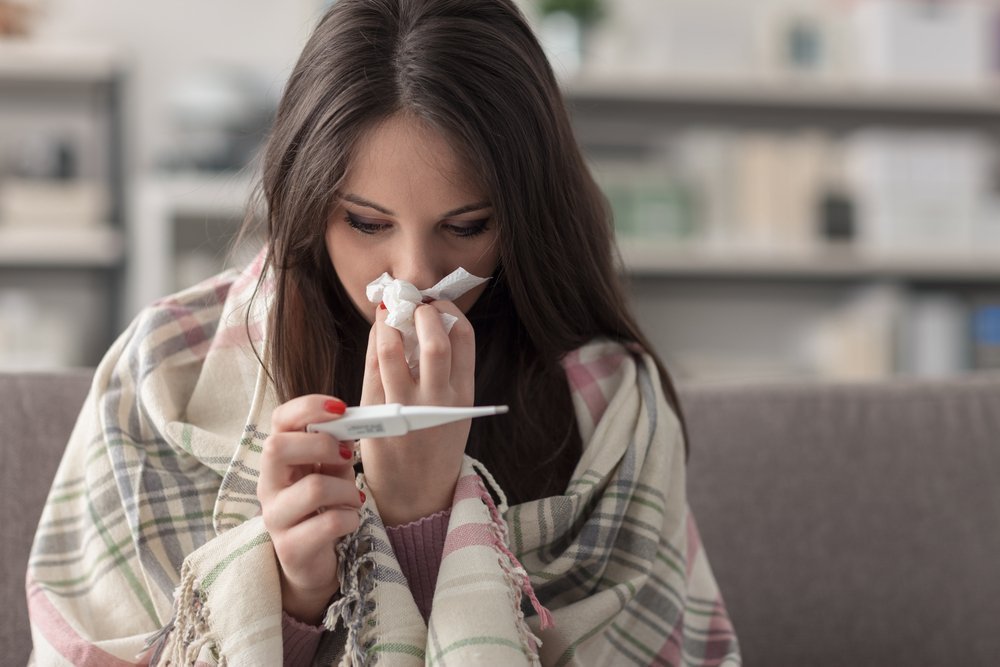
Thermoregulation is provided by the endocrine system, which triggers various mechanisms to increase or decrease a person's temperature. And of course, disturbances in the production of hormones or the functioning of the glands entail disturbances in thermoregulation. Such manifestations, as a rule, are stable, and the values \u200b\u200bremain within the subfebrile range.
The main cause of elevated temperature is pyrogens, which can affect thermoregulation. Moreover, some of them are not introduced from the outside by pathogens, but are secreted by the cells of the immune system. Such pyrogens are designed to increase the effectiveness of the fight against various health-threatening conditions. The temperature rises in such cases:
- Infections - viruses, bacteria, protozoa and others.
- Burns, injuries. As a rule, there is a local increase in temperature, but with a large area of \u200b\u200bthe lesion, there may be a general fever.
- Allergic reactions. In these cases, the immune system produces pyrogens to fight off harmless substances.
- Shock states.
ARI and high fever
Seasonal respiratory diseases Is the most common cause of temperature rise. Moreover, depending on the type of infection, its values \u200b\u200bwill be different.
- With a standard cold or mild ARVI, a subfebrile temperature is observed, in addition, it rises gradually, on average in 6-12 hours. When correct treatment the fever lasts no more than 4 days, after which it begins to subside or disappears altogether.
- If the temperature rises sharply and exceeds 38 ° C, this may be a symptom of the flu. Unlike other acute respiratory viral infections, this disease requires the mandatory supervision of a local therapist or pediatrician.
- If the fever resumed after improvement in the condition or does not go away on the 5th day from the onset of the disease, this most often indicates complications. The initial viral infection was joined by a bacterial infection, with the temperature, as a rule, above 38 ° C. The condition requires an urgent call to the doctor, as the patient may need antibiotic therapy.
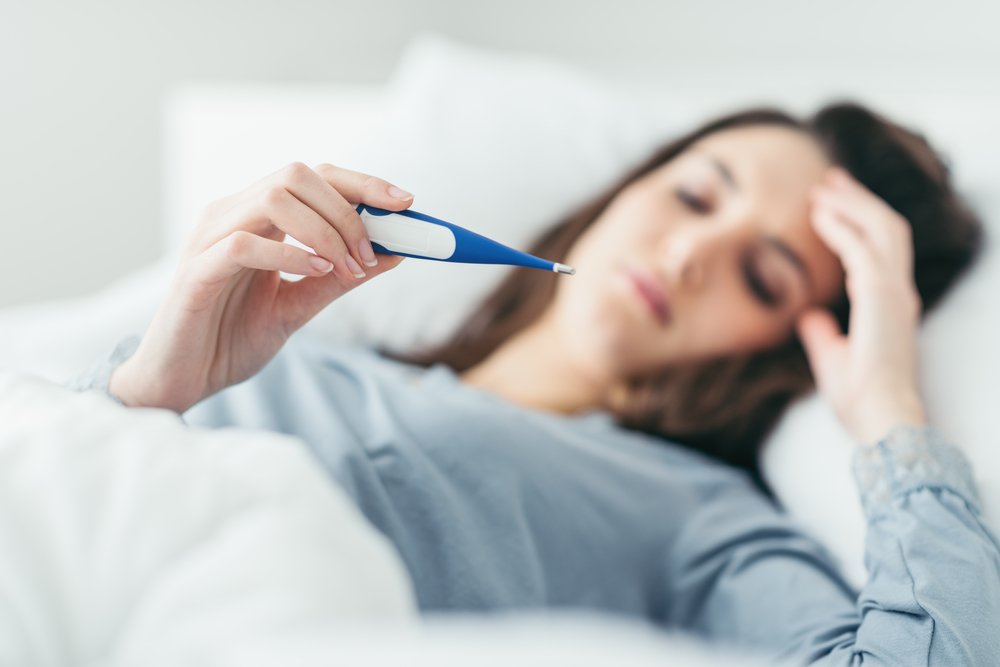
A temperature of 37-38 ° C is typical for such diseases:
- ARVI.
- Exacerbations of chronic diseases respiratory tract... For example, bronchitis or bronchial asthma, tonsillitis.
- Tuberculosis.
- Chronic diseases internal organs during an exacerbation: myocarditis, endocarditis (inflammation of the heart membranes), pyelonephritis and glomerulonephritis (inflammation of the kidneys).
- Ulcer, colitis.
- Viral hepatitis (usually hepatitis B and C).
- Herpes in the acute stage.
- Exacerbation of psoriasis.
- Infection with toxoplasmosis.
This temperature is typical for the initial stage of thyroid dysfunction, with increased production of hormones (thyrotoxicosis). Hormonal disturbances during menopause can also cause mild fever. Subfebrile values \u200b\u200bcan be observed in people with helminthic invasion.
Diseases with a temperature of 39 ° C and above
High temperature accompanies diseases that cause severe intoxication of the body. Most often, values \u200b\u200bwithin 39 ° C degrees indicate the development of an acute bacterial infection:
- Angina.
- Pneumonia.
- Acute pyelonephritis.
- Diseases of the gastrointestinal tract: salmonellosis, dysentery, cholera.
- Sepsis.
At the same time, a strong fever is typical for other infections:
- Flu.
- Hemorrhagic fever in which the kidneys are severely affected.
- Chicken pox.
- Measles.
- Meningitis, encephalitis.
- Viral hepatitis A.
Other causes of high fever
Thermoregulation disorders can be observed without visible diseases. Another dangerous reason that the temperature has risen is the inability of the body to provide adequate heat transfer. This happens, as a rule, with prolonged exposure to the sun during the hot season or in a too stuffy room. A child's temperature may rise if he is dressed too warmly. The condition is dangerous with heatstroke, which can be fatal for people with heart and lung disease. With severe overheating, even in healthy people, organs, primarily the brain, suffer significantly. Also, fever for no apparent reason can manifest itself in emotional people during periods of stress and intense excitement.

A low temperature is less common than a heat, but at the same time, it can also indicate serious health problems. Indicators of diseases and disorders of the body are considered indicators below 35.5 ° C for an adult, in the elderly - below 35 ° C.
The following degrees of body temperature are considered life-threatening:
- 32.2 ° C - a person will fall into a stupor, severe lethargy is observed.
- 30-29 ° C - loss of consciousness.
- Below 26.5 ° C - death is possible.
Low temperature is characterized by the following symptoms:
- General weakness, malaise.
- Drowsiness.
- Irritability may occur.
- The limbs get cold, numbness of the fingers develops.
- Disturbances of attention and problems with thought processes are noticeable, the speed of reactions decreases.
- General feeling of coldness, trembling in the body.
Low temperature reasons
Among the main reasons for the low temperature are the following:
- General weakness of the body caused by external factors and living conditions.
Inadequate nutrition, lack of sleep, stress and emotional distress can affect thermoregulation.
- Endocrine system disorders.
Associated, as a rule, with insufficient synthesis of hormones.
- Hypothermia.
The most common cause of low fever in humans. The condition is dangerous by a violation of metabolic processes and frostbite of the limbs only in case of a strong drop in temperature. With a slight hypothermia, a person's local immunity decreases, so this or that infection often develops later.
- Weakened immune system
It is observed during the recovery period, after operations, and can manifest itself against the background of chemotherapy and radiation therapy. Also, low temperatures are typical for people with AIDS.
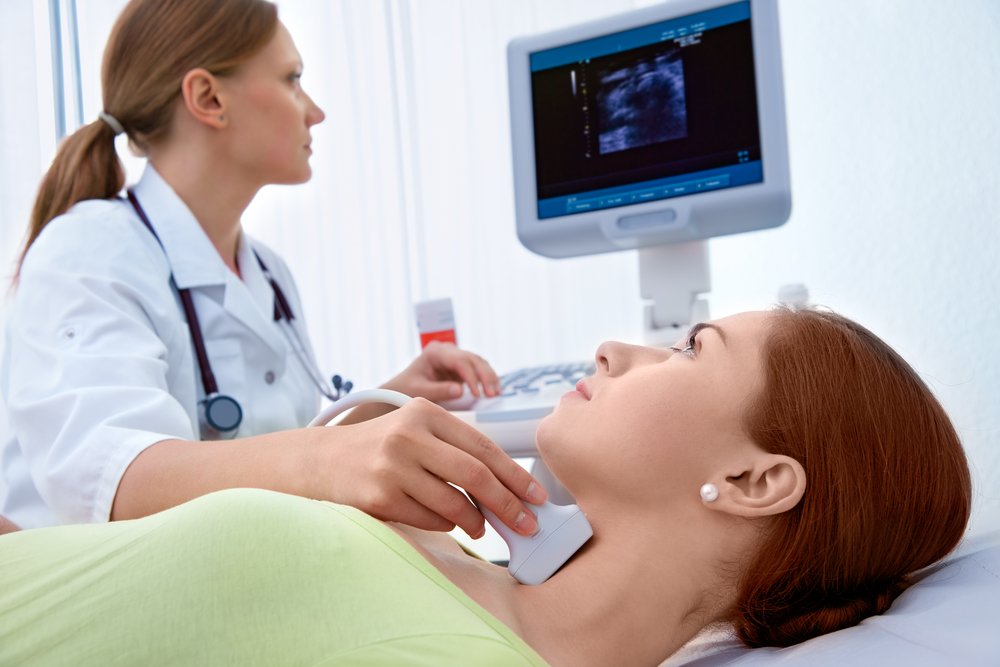
Hormones play an important role in the processes of thermoregulation. In particular, the thyroid hormones of the thyroid gland are thyroxine and triiodothyronine. With their increased synthesis, heat is often observed, but, on the contrary, it leads to a decrease in the overall temperature. In the initial stages, this is often the only symptom by which the development of the disease can be suspected.
A stable decrease in body temperature is also observed with adrenal insufficiency (Addison's disease). Pathology develops slowly, it may not manifest itself in other signs for months or even several years.
Low hemoglobin in the blood
Iron deficiency anemia is considered one of the most common causes of low fever. It is characterized by a decrease in hemoglobin in the blood, and this in turn affects the functioning of the whole organism. Hemoglobin is responsible for the transport of oxygen to cells, and if it is not enough, different degrees of hypoxia appear.
A person becomes lethargic, general weakness is noted, against the background of which metabolic processes slow down. Low temperatures are the result of these changes.
In addition, the hemoglobin level can also drop with various blood loss. In particular, people with internal bleeding can develop anemia. If significant blood loss occurs in a short period of time, the volume of circulating blood decreases, and this already affects heat exchange.
Other causes of low temperature
Among the dangerous conditions that require mandatory medical advice and treatment, one can single out such diseases with a low temperature:
- Radiation sickness.
- Strong intoxication.
- AIDS.
- Diseases of the brain, including tumors.
- Shock of any etiology (with massive blood loss, allergic reactions, traumatic and toxic shock).
However, the most common causes of temperatures below 35.5 ° C are improper lifestyle and lack of vitamins. So, nutrition remains an important factor, if it is not enough, then the processes in the body will slow down, and as a result, thermoregulation will be disrupted. Therefore, with various strict diets, especially with a poor diet (deficiency of iodine, vitamin C, iron), low temperature without other symptoms is very common. If a person consumes less than 1200 calories per day, this will certainly affect thermoregulation.
Another common cause of this temperature is overwork, stress, lack of sleep. It is especially characteristic of chronic fatigue syndrome. The body goes into a sparing mode of functioning, metabolic processes slow down in the body and, of course, this is reflected in heat exchange.
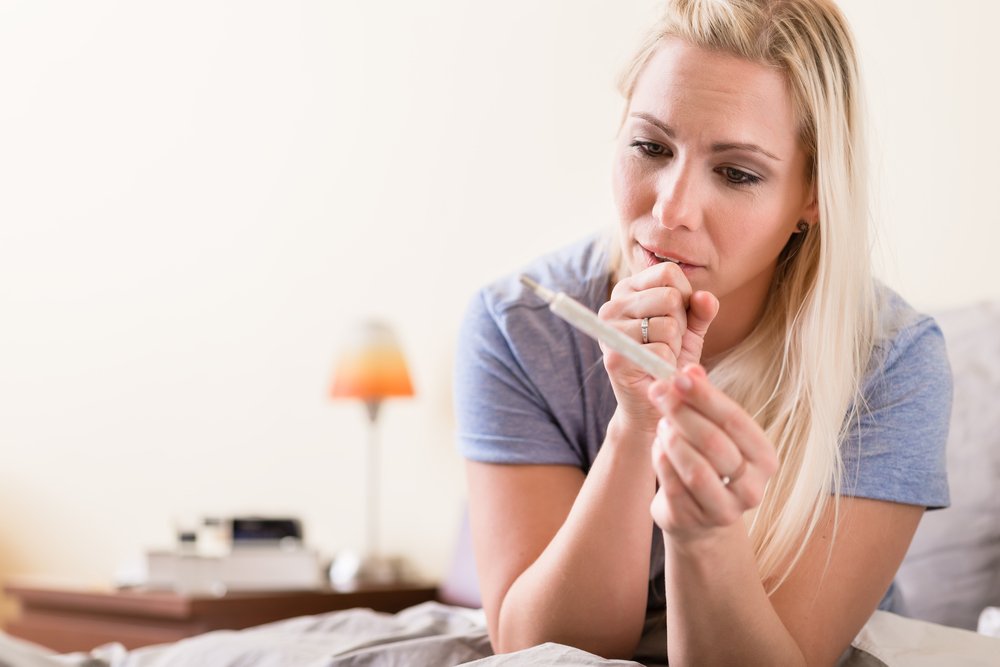
Since temperature is only a symptom of various disorders in the body, it is best to consider it in combination with other signs of disease. It is the general picture of a person's condition that can tell what kind of disease is developing and how dangerous it is.
An increase in temperature is often observed with various ailments. However, there are characteristic combinations of symptoms that appear in patients with specific diagnoses.
Fever and pain
In the event that, with abdominal pain, the temperature is kept above 37.5 ° C, this may indicate serious violations of the gastrointestinal tract. In particular, this is observed with intestinal obstruction. In addition, a combination of symptoms is characteristic of the development of appendicitis. Therefore, if the pain is localized in the right hypochondrium, it is difficult for a person to pull his legs to the chest, there is a loss of appetite and cold sweat, an ambulance should be called immediately. Complication of appendicitis, peritonitis, is also accompanied by persistent fever.
Other causes of a combination of abdominal pain and fever:
- Pyelonephritis.
- Acute pancreatitis.
- Bacterial diseases intestines.
If the temperature has risen against the background of pain in the head, this most often indicates a general intoxication of the body and is observed with such diseases:
- Influenza and other acute respiratory viral infections.
- Angina, scarlet fever.
- Encephalitis.
- Meningitis.
Pain in joints and muscles, discomfort in the eyeballs are symptoms of temperature above 39 ° C. In such conditions, it is recommended to take an antipyretic.

An elevated temperature against the background of diarrhea is a clear sign of bacterial infection of the gastrointestinal tract. Among intestinal infections with the following symptoms:
- Salmonellosis.
- Cholera.
- Botulism.
- Dysentery.
The cause of the temperature against the background of diarrhea can be severe food poisoning. The combination of such symptoms is very dangerous to health, therefore, self-medication in such cases is unacceptable. It is necessary to urgently call an ambulance and, if necessary, agree to hospitalization. This is especially true if the child is sick.
Fever and diarrhea are contributing factors to dehydration. And with their combination, the loss of fluid by the body can become critical in a fairly short period. Therefore, if it is not possible to adequately compensate for the lack of fluid with drinking (for example, a person has vomiting or the diarrhea itself is pronounced), the patient is injected with intravenous solutions in a hospital. Without it, dehydration can lead to serious consequences, organ damage and even death.
Fever and nausea
In some cases, nausea can be caused by fever. Due to intense heat, weakness develops, blood pressure decreases, dizziness occurs, and this is what causes mild nausea as a result. In this condition, if the temperature is above 39 ° C, it must be brought down. A combination of symptoms can appear in the early days of the flu and be caused by severe intoxication of the body.
One of the causes of nausea and fever during pregnancy is toxicosis. But in this case, values \u200b\u200babove subfebrile (up to 38 ° C) are rarely observed.
In the event that nausea is accompanied by other disorders of the gastrointestinal tract (for example, pain, diarrhea, or, conversely, constipation), simply bringing down the temperature is not enough. This combination of symptoms can indicate serious diseases of the internal organs. Among them:
- Viral hepatitis and other liver damage.
- Acute appendicitis.
- Peritonitis.
- Inflammation of the kidneys.
- Acute pancreatitis.
- Bowel obstruction (accompanied by constipation).
In addition, fever and nausea are often observed against the background of intoxication with stale food, alcohol or drugs. And one of the most dangerous diagnoses for these symptoms is meningitis. All of the listed diseases and conditions require mandatory medical advice.
In the event that vomiting occurs against the background of temperature, it is very important to compensate for the loss of fluid. Children with this combination of symptoms are most often referred for inpatient treatment.
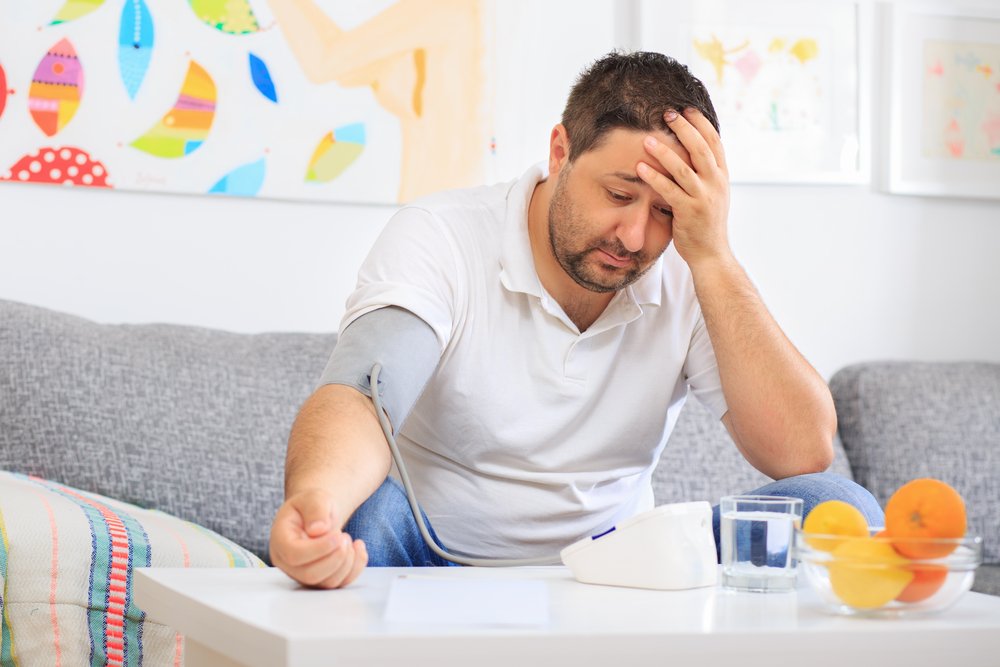
Increased blood pressure is a common symptom of fever. Fever affects hemodynamics - the heart rate increases in patients, and the blood begins to move faster through the vessels, they expand, and this can affect blood pressure. However, such changes cannot cause severe hypertension, more often the indicators do not exceed 140/90 mm Hg. Art., observed in patients with a fever of 38.5 ° C and above, disappear as soon as the temperature stabilizes.
In some cases, high temperatures, on the contrary, are characterized by a decrease in pressure. There is no need to treat this condition as the readings return to normal after the fever subsides.
At the same time, for hypertensive patients, any, even a slight fever, can threaten with serious consequences. Therefore, they should consult with their doctor and, if necessary, take antipyretics already at levels from 37.5 ° C (especially when it comes to the elderly).
Pressure and temperature are a dangerous combination for patients with such diseases:
- Cardiac ischemia. Cardiologists note that this combination of symptoms sometimes accompanies myocardial infarction. Moreover, in this case, the temperature rises slightly, it may be within the subfebrile parameters.
- Heart failure.
- Arrhythmias.
- Atherosclerosis.
- Diabetes.
In the event that low pressure and temperature in the subfebrile range persist for a long time, this may be a sign of oncopathology. However, not all oncologists agree with this statement, and the symptoms themselves should simply become a reason for a full examination of a person.
Low pressure and low temperature are common combinations. Such symptoms are especially characteristic with low hemoglobin, chronic fatigue, blood loss, and nervous disorders.
Fever without other symptoms
Fever or fever without symptoms associated with acute infections, should be the reason for a mandatory medical examination. Violations can talk about such diseases:
- Chronic pyelonephritis.
- Tuberculosis.
- Malignant and benign tumors.
- Organ infarctions (tissue necrosis).
- Diseases of the blood.
- Thyrotoxicosis, hypothyroidism.
- Allergic reactions.
- Early stage rheumatoid arthritis.
- Disorders of the brain, in particular the hypothalamus.
- Mental disorders.
Fever without other symptoms also occurs against the background of overwork, stress, after prolonged physical activity, overheating or hypothermia. But in these cases, the indicators stabilize. If we are talking about serious illnesses, the temperature without symptoms will be quite stable, after normalization, it will rise or fall again over time. Sometimes hypothermia or hyperemia is observed in a patient for several months.

An elevated temperature can cause significant discomfort, and in some cases even pose a threat to life. Therefore, any person needs to know what to do with a fever and how to bring down the temperature correctly.
When to bring down the temperature
Not always, if the temperature rises, it needs to be brought back to normal. The fact is that with infections and other lesions of the body, he himself begins to produce pyrogens, which cause fever. The high temperature helps the immune system fight antigens, in particular:
- The synthesis of interferon, a protein that protects cells from viruses, is activated.
- The production of antibodies is activated, which destroy antigens.
- The process of phagocytosis - absorption is accelerated foreign bodies phagocytic cells.
- Reduced physical activity and appetite, which means that the body can spend more energy to fight infection.
- Most bacteria and viruses survive best at normal human temperatures. When it rises, some microorganisms die.
Therefore, before deciding to "bring down the temperature", you need to remember that fever helps the body to recover. However, there are still situations in which the heat must be removed. Among them:
- Temperature is over 39 ° C.
- Any temperature at which there is a serious deterioration in the condition - nausea, dizziness, etc.
- Febrile seizures in children (any fever above 37 ° C goes astray).
- In the presence of concomitant neurological diagnoses.
- People with diseases of the heart and blood vessels, with diabetes.
Air, humidity and other parameters in the room
There are many ways to lower the temperature. But the first task should always be to normalize the air parameters in the room where the patient is. This is especially important for children in the first years of life, and it is critical for babies. The fact is that the child's perspiration system is still poorly developed and therefore thermoregulation is carried out to a greater extent through breathing. The kid inhales cool air, which cools his lungs and the blood in them, and exhales warm air. In the event that the room is too warm, this process is ineffective.
Indoor humidity is also important. The fact is that the humidity of the exhaled air is normally close to 100%. At a temperature, breathing quickens and if the room is too dry, through breathing a person additionally loses water. In addition, the mucous membranes dry out, congestion develops in the bronchi and lungs.
Therefore, the ideal parameters in the room where the patient with fever is located are:
- Air temperature - 19-22 ° C.
- Humidity - 40-60%.
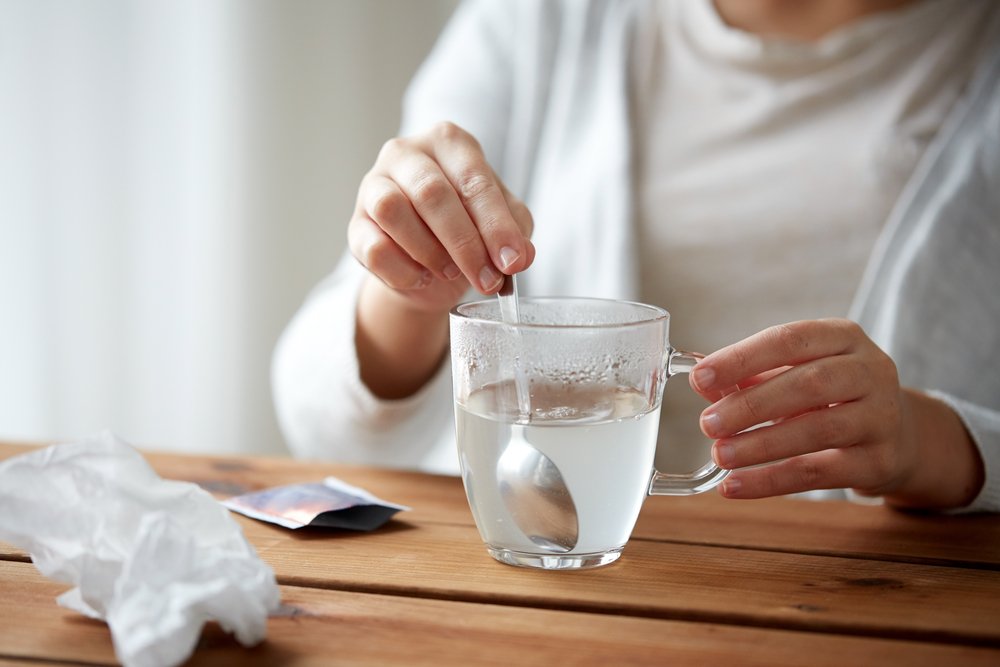
In the event that you need to quickly bring down the temperature, you can use antipyretics. They are taken symptomatically, which means that as soon as the symptom goes away or becomes less pronounced, the medication is stopped. Drinking antipyretics throughout the disease for prevention is unacceptable.
One of the main conditions for the successful action of this group of drugs is drinking plenty of fluids.
The main antipyretic:
- Paracetamol.
Actively prescribed for adults and children, it is considered a first-line drug. However, recent studies, in particular, carried out by the American organization FDA, have shown that when taken uncontrolled, paracetamol can cause serious liver damage. Paracetamol works well if the temperature does not exceed 38 ° C, but in extreme heat it may not work.
- Ibuprofen.
One of the key non-steroidal anti-inflammatory drugs (NSAIDs) used for fever. It is prescribed for adults and children.
- Aspirin (acetylsalicylic acid).
For a long time it was the main drug in the NSAID category, but over the past decades it has been proven to be associated with severe kidney and liver damage (in case of overdose). Also, researchers believe that taking aspirin in children can cause the development of Reye's syndrome (pathogenic encephalopathy), so at the moment the drug is not used in pediatrics.
- Nimesulide (nimesil, nise).
Latest generation non-steroidal anti-inflammatory agent. Contraindicated in children.
- Analgin.
Today it is practically not used as an antipyretic, but it can still relieve fever.

The temperature can also be brought down with the help of folk remedies. Among the most common and simple ways - decoctions of herbs and berries. Drinking plenty of fluids is always recommended at high temperatures as it helps to improve sweating and reduces the risk of dehydration.
Some of the more popular herbs and berries used for fever are:
- Raspberry, including leaves.
- Black currant.
- Sea buckthorn.
- Lingonberry.
- Linden.
- Chamomile.
A hypertonic solution will also help to normalize the temperature. It is prepared from ordinary boiled water and salt - two teaspoons of salt are taken for 1 glass of liquid. This drink helps the cells to retain water and is great if the temperature is manifested against the background of vomiting and diarrhea.
- Newborns - no more than 30 ml.
- From 6 months to 1 year - 100 ml.
- Up to 3 years - 200 ml.
- Up to 5 years - 300 ml.
- Over 6 years old - 0.5 liters.
Ice can also be used for fever symptoms. But it must be used very carefully, since a sharp cooling of the skin can lead to vasospasm and the development of white fever. Ice is placed in a bag or placed on a piece of cloth and only in this form is applied to the body. A good alternative is to wipe down with a towel soaked in cold water... In the event that it is not possible to bring down the temperature, antipyretics do not work, but folk remedies do not help, you need to urgently call an ambulance.
How to raise the temperature
If the body temperature drops below 35.5 ° C, the person feels weak and unwell, you can increase it in the following ways:
- Warm, abundant drink. Tea with honey, rosehip broth helps well.
- Liquid warm soups and broths.
- Warm clothes.
- Covering with several blankets, you can use a heating pad for greater effect.
- Hot bath. May be supplemented with essential oils of coniferous trees (fir, spruce, pine).
- Exercise stress. A few vigorous exercise can help improve circulation and body temperature.
In the event that the temperature remains below 36 ° C for a long time, you need to consult a doctor. And after finding out the cause of such a symptom, the specialist will prescribe the appropriate treatment.
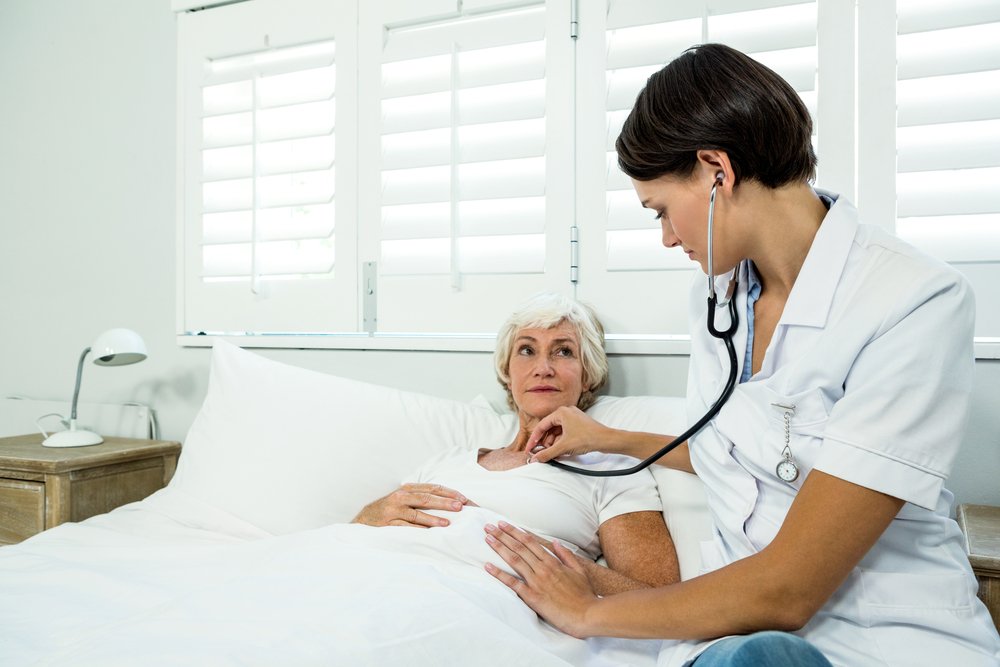
In some cases, high fever can pose a serious threat to health, and then you simply cannot do without the help of doctors. An ambulance must be called in such cases:
- Temperature 39.5 ° C and above.
- Sharp rise temperature and the inability to bring it down with antipyretic and other methods.
- Against the background of the temperature, diarrhea or vomiting is observed.
- The fever is accompanied by shortness of breath.
- there is severe pain anywhere on the body.
- There are signs of dehydration: dry mucous membranes, pallor, severe weakness, dark urine or lack of urination.
- High pressure and temperature above 38 ° C.
- The fever is accompanied by a rash. Particularly dangerous is a red rash that does not disappear with pressure - a sign of meningococcal infection.
Fever or low temperature is an important signal of the body about illness. This symptom should always be given due attention and try to fully understand its causes, and not just eliminate it with medications and other methods. But at the same time, do not forget that normal temperature is an individual concept and not everyone corresponds to the well-known indicator of 36.6 ° C.
I know many parents whose high temperature causes panic ... I would like to try to figure out when a high temperature in a child or an adult is our friend, and when it is our enemy.
“Fever is a protective and adaptive reaction of the body, expressed in the restructuring of thermoregulation to maintain a higher than normal level of heat content and body temperature. This is a typical process formed in the process of evolution in warm-blooded animals. Fever is created by the organism itself, its regulatory systems ... The biological expediency of fever as a process is explained by the acceleration of catabolism (decay) of the "alien" in the focus of inflammation (proven for pneumococci, gonococci, spirochetes, and high fever - above 40 degrees is simply fatal for these microbes, phagocytosis and immunity are activated). The use of antipyretic drugs is inappropriate, as they "obscure" the clinical picture of the disease, providing a sense of false security.
Antipyretic therapy carries risks - side effects of drugs in the form of allergic reactions, inhibition of the hematopoietic growth of the bone marrow, damage to the gastric mucosa. "
Academician G.I. Marchuk showed that high temperature accelerates the migration of lymphocytes and viruses, they more often collide with each other and form “virus-lymphocyte” complexes, and artificially lowering the temperature with the help of tablets can provoke protracted or chronic diseases.
I will quote a few more facts from the book by Robert Mendelssohn "How to Raise a Child Healthy Despite ... Doctors":
Fact number 7. Most cases of fever are associated with viral and bacterial infections, which the body's defenses cope with without any help. Colds and flu are the most common reasons temperature rise. The temperature can rise to 40.5 degrees, but even then there is no cause for concern. The only danger is the risk of dehydration from the accompanying processes of sweating, rapid pulse and breathing, coughing, vomiting and diarrhea. It can be avoided by drinking plenty of fluids. It would be nice if the child drank a glass of liquid every hour, preferably nutritious. This can be fruit juice, tea and anything that the child will not refuse.
Fact number 9. The temperature caused by a viral or bacterial infection, if not brought down, will not rise above 41 degrees. Pediatricians are doing a disservice by prescribing antipyretics. As a result of their appointments, parents' anxiety that the temperature may rise to an extreme limit if not taken care of is reinforced and intensified. Doctors do not say that knocking down the temperature does not affect the healing process, nor does the fact that the human body has a mechanism (not yet fully explained) that does not allow the temperature to overcome the 41-degree barrier.
Fact number 10. Measures to reduce fever, whether it be using antipyretics or rubbing with water, are not only unnecessary, but also harmful. If the child is infected, then the increase in temperature that accompanies the course of the disease, the parents should not perceive as a curse, but as a blessing. The temperature rises as a result of the spontaneous production of pyrogens, the substances that cause fever. This is the body's natural defense against disease. A rise in temperature indicates that the body's healing system has turned on and is working.
Fever is a common symptom in children that is not associated with serious illness (in the absence of other alarming symptoms such as unusual appearance and behavior, difficulty breathing and loss of consciousness). It is not indicative of the severity of the disease. The temperature that rises as a result of infection does not reach values \u200b\u200bat which irreversible damage to the child's organs is possible.
Fever does not require medical intervention beyond what is recommended below. The temperature does not need to be brought down. It is the body's natural defenses against infection and helps speedy healing.
1. If the body temperature of a child under two months has risen above 37.7 degrees, see a doctor. This may be a symptom of an infection, whether intrauterine or associated with an obstruction to the birth process. Fever in children of this age is so unusual that it is prudent to play it safe and rather calm down if the alarm turns out to be false.
2. For children over two months of age, a doctor is not needed when the temperature rises, unless the temperature is more than three days or is accompanied by severe symptoms such as vomiting, shortness of breath, strong cough for several days and others, not typical for colds. Check with a doctor if your child is unusually lethargic, irritable, distracted, or looks seriously ill.
3. Consult a doctor regardless of the thermometer reading if the child has difficulty breathing, indomitable vomiting, if the temperature is accompanied by involuntary muscle twitching or other strange movements, or if something else bothers the child's behavior and appearance.
4. If the rise in temperature is accompanied by chills, do not try to cope with this sensation of the child with a blanket. This will lead to an even more dramatic rise in temperature. Chills are not dangerous - this is a normal reaction of the body, a mechanism of adaptation to a higher temperature. It does not mean that the child is cold.
5. Try to put the feverish child to bed, but do not overdo it. There is no need to tie your child to bed and keep him at home unless the weather is too bad. Fresh air and moderate activity will improve your baby's mood without worsening their condition and make your life easier. However, too intense loads and sports should not be encouraged.
6. If there is reason to suspect that the cause of the high temperature is not infection, but other circumstances - overheating or poisoning, take the child to the hospital immediately. If there is no emergency department in your area, use any available medical assistance.
7. Do not try, according to folk tradition, "to starve the fever." Nutrition is essential for recovery from any illness. If the child is unresponsive, feed both colds and fevers. Both those and others burn the reserves of proteins, fats and carbohydrates in the body, and they need to be replaced. If your child refuses to eat, give them nutritious fluids such as fruit juice.
A high fever and its usually accompanying symptoms result in significant fluid loss and dehydration. It can be avoided by giving the child a lot to drink, best of all - fruit juices, but if he does not want them, any liquid will do, preferably one glass every hour.
And finally, how not to remember Hippocrates, who argued: "Give me a fever and I will cure any disease!"
Well, now a few conclusions from personal experience. Why is there a dogma in my head that the temperature SHOULD be brought down? Yes, simply because, in addition to doctors who prescribe tons of antipyretic drugs, there are also our mothers, grandmothers, who were brought up on antipyretics themselves and raised us in the same vein.
They also like to scare us with stories about blood clotting at 42 degrees and the presence of seizures in children at high temperatures. It's worth noting here that febrile seizures are NOT life-threatening. If for someone WHO is an indicator, then it mentions that seizures are not the result of a high temperature, but the result of its JUMP. That is, they can begin both from a sharp rise in temperature and from a sharp decrease (often, thanks to just antipyretic drugs).
The funny thing is that mommies begin to reduce their fear by shoving drugs not into themselves ... but into the CHILD!
And of course after that the illness for the child is guaranteed.
The use of antipyretic drugs is justified only for children with severe pathologies of the nervous system, with epilepsy, congenital heart disease ... Excessive use of antipyretic, anti-inflammatory, antibacterial drugs, immunomodulators has led to the fact that today we have a lot of "often ill children." Parents "heal" their children, forgetting about the body's natural defense mechanisms.
It is also worth remembering the Slavs who invented the bath specifically for heating !!! body. For some reason, our ancestors knew that body heating is useful for ailments, but we have forgotten about it. Why?
You can also mention the "exploits" of paracetamol, also a favorite drug by many. “After analyzing the data of more than two hundred thousand children (not the first study of this kind with similar results), we had to recognize a serious correlation between the development of childhood asthma with the use of paracetamol. Moreover, the more they consumed, the more likely asthma, rhinoconjunctivitis and eczema are.
And, of course, aspirin. The "Institute of Influenza" recommends avoiding the use of aspirin. “Because with virus B, unlike virus A, aspirin causes neurological syndrome (Reye's syndrome) with an enlarged liver. In addition, when the virus enters the human body, vasodilation occurs and blood clotting increases, and this is how aspirin works.In fact, a doubled effect can have very serious undesirable consequences. "
I'd like to convey to people that:
1) knocking down the temperature even by half a degree, we do not allow the body to develop a specific immunity, and the next time it meets this infection, it will again be helpless in front of it
2) the body will still try to "take its own" and carry out the program, that is, we lower the temperature, the body raises it again - thus, the healing process takes much longer than if we did not interfere in it.
3) All help is an intervention, but not all intervention is help.
4) Dehydration does not come from temperature, but from the loss of fluid, which must be replenished. When the time comes, the temperature will calmly drop by itself.
5) High temperature in case of infection, colds, food poisoning ... - a survival mechanism.
6) The reactions of your body should be respected, treated as an intelligent, able-bodied, close friend striving for healing, and he will respond with health. Man walking right through acute illness, NEVER have chronic illnesses.
7) Currants, raspberries, honey, rose hips, drinking - this is good, but in no case pharmaceutical poisons imposed on us from television screens.
"Knocking down" the temperature cripples the immune system
Before knocking down the temperature with the next ARVI, think carefully. Immunologists at the Cancer Institute in Buffalo, New York have found that an increase in body temperature significantly increases the efficiency of certain types of work.immune cells.
Since ancient times, increased body temperature has been associated with infections and inflammation. In nature, this mechanism is practically universal, since even the so-called cold-blooded animals (amphibians and reptiles), with certain diseases, try to find a warmer place for themselves.
Researchers have found that hyperthermia (fever)stimulates the formation and differentiation of a specific type of immune cell known asCD 8+ cytotoxic T-lymphocytes, the function of which is to destroy virus-infected and tumor cells.
As part of their experiment, they injected two groups of mice with an antigen (a protein that is part of the pathogen and causes the development of a selective immune response) and analyzed the level of activation of T-lymphocytes during their interaction with antigen-presenting cells. These cells absorb antigens that enter the body, break them down into fragments, with the help of which they subsequently “train” cytotoxic T-lymphocytes to a specific pathogen. The body temperature of mice in one group was previously increased by 2 degrees Celsius. The results obtained showed that "heating" significantlyincreased the number of T-lymphocytes capable of destroying infected cells.
Of course, fever is often accompanied by very unpleasant sensations, but the results obtained by researchers once again confirm that an increase in body temperature is necessary for the development of an effective immune response. Previously, it was believed that microorganisms cannot multiply under conditions of hyperthermia, but new evidence indicates that the benefits of heat are not limited to this. Of course, you should not forget that an excessive increase in body temperature is life-threatening, just as you should not abuse antipyretic drugs.
rnd.cnews.ru
Parents are often worried about why the child's temperature rises sharply? In fact, there may be several reasons, but in any case, the very fact that the child has an increase in fever suggests that his body is trying to cope with the viruses and bacteria that have entered it. The temperature, which does not exceed 38.5 degrees, is not considered dangerous and modern doctors recommend not to knock it down and allow the child's body to cope with the virus on its own. But why is a high temperature in a child dangerous, what temperature in children should the parents be alerted to, when and how should it be brought down?
High fever in children
Children in the first years of life are less tolerant of fever than adolescents. Therefore, the first task of parents is to closely monitor the behavior of the child, his skin, and periodically measure the temperature. In addition, provide your baby with plenty of fluids, dress him in lightweight cotton pajamas, and turn off any irritants to the eyes and ears. That is, during this period, doctors recommend a calm environment - turn off the TV and unnecessary lighting elements.
High temperatures at different ages have their own characteristics:
In newborns, the reaction to an increase in temperature is not yet perfect. Moreover, only in isolated cases, it can accompany the development of infection in the body, or inflammatory process.
In children under one year of age, the heat transfer system is not yet sufficiently developed.
In children under 3 years of age, heat transfer exceeds the production of heat, so hypothermia can cause illness.
Temperature rise mechanism
The penetration of foreign bacteria, viruses and infections stimulates the release of leukocytes from the lymphatic tissue and blood, which fight the infection, while releasing a substance such as interleukin. As a result, with the blood flow, interleukin penetrates into the brain thermoregulation center, which is responsible for temperature stability.
Important! The penetration of interleukin into the hypothalamus signals the brain that the child is cold. As a result, the latter begins to heat it up, which causes vasospasm, due to which the heat does not come out, thus raising the overall temperature.
This is the primary reason why high fever is sometimes accompanied by cold extremities in children.
Under the influence of temperature, bacteria and viruses begin to die, which contributes to the transition of fever to the next stage - the child begins to sweat. The death of the infection reduces the number of leukocytes in the blood, respectively, interleukin no longer affects the thermoregulation of the body.
Sometimes, a high fever is the only way to fight an infection. But this condition can sometimes lead to negative consequences.
As already described above, there are several reasons that can cause an increase in temperature. The main ones are: 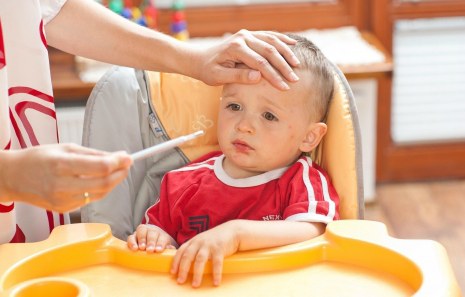 Viral infection
Viral infection
Bacterial infection
Allergy,
Overheat,
Stress,
Teething.
How to correctly measure body temperature in children
A high temperature is a symptom that the child's body is actively fighting an infected infection. But tactile sensations cannot be taken seriously. To measure the temperature and make sure it is really high, you need to use a thermometer. The thermometer can be mercury or electronic. Electronic thermometers are the safest device for measuring body temperature in children, but, unfortunately, their readings are not always accurate.
The temperature should be measured in the armpit, inguinal fold, or in the rectum. In this case, the baby should be completely calm and not cry. You can not measure body temperature while eating.
Remember that the thermometer readings in the evening will be slightly higher than in the morning. The duration of the procedure should be approximately 10 minutes.
Dangerous temperature for a child
What should parents do if the baby has a high fever? What temperature is considered dangerous for children? It should be noted right away that the actions of the parents to reduce it are not always justified and expedient. For example, for viral diseases, when antibiotics are not used for treatment, fever is considered the only effective method treatment. But not if the indicator of the thermometer exceeds 40 degrees. Let's consider the question, what is the danger of a high temperature in a child and at what rate of the thermometer should it be reduced?
In the first year of a child's life, the function of thermoregulation has not yet been improved, so the thermometer indicator can range from 36.6 to 37, and sometimes up to 37.2 degrees. If, with such indicators, there are no other symptoms of the disease, then they are considered normal and there is no need to knock it down - the child is completely healthy.
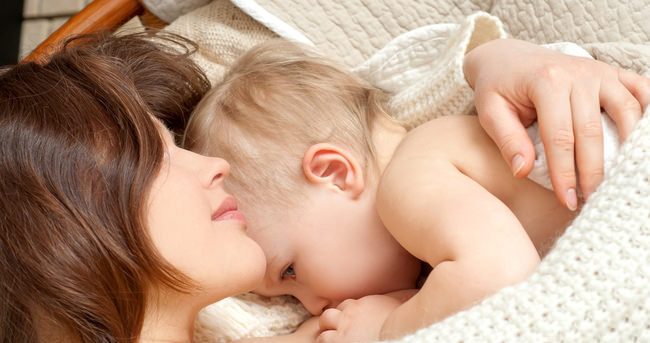 Subfebrile temperature (37-38 ° C) can manifest itself when overheated. And if such an indicator persists in a child for 4 days or more, then it should be shown to the doctor. This may indicate a decrease in immunity or the presence of an inflammatory process in his body caused by viruses. It should be noted that low-grade fever in a teenager with vegetative-vascular dystonia can occur without an infectious disease.
Subfebrile temperature (37-38 ° C) can manifest itself when overheated. And if such an indicator persists in a child for 4 days or more, then it should be shown to the doctor. This may indicate a decrease in immunity or the presence of an inflammatory process in his body caused by viruses. It should be noted that low-grade fever in a teenager with vegetative-vascular dystonia can occur without an infectious disease.
A febrile temperature of 38 to 39 ° C is a high fever, but it reduces the activity of the infection. But if the indicator of the thermometer rises higher, then for the child it is already considered dangerous. Therefore, a temperature between 39 and 41 ° C is called pyretic, and can cause dangerous complications on the part of the cardiovascular system and even convulsions.
If the temperature rises above 41 ° C, an ambulance should be called immediately. With such indicators, irreversible consequences can occur in the brain, which leads to death.
It should be noted that for children with diseases of the cardiovascular system and neurological pathologies, temperatures above 38 degrees are also considered dangerous!
What should parents do if the body temperature rises above 39 degrees.
The behavior and timely response of the parents will help ease the suffering of the child in time, so each of them should know the basic rules that need to be followed in high heat.
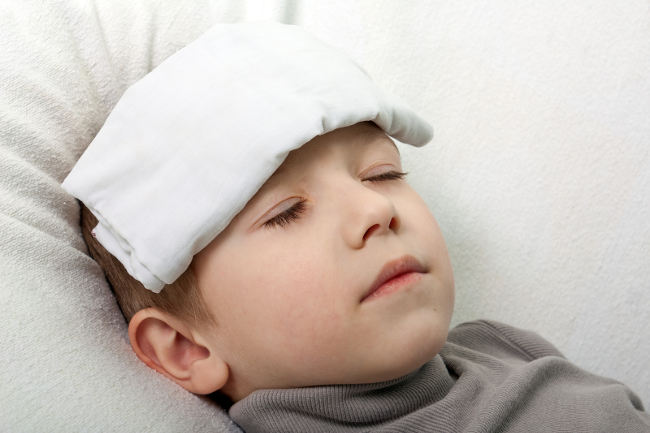 1. First, make sure that the child's room is well ventilated and that the humidity level is correct.
1. First, make sure that the child's room is well ventilated and that the humidity level is correct.
2. Undress the child and wipe his body with a soft cloth dampened with water at room temperature. You can put a cool compress on your forehead.
3. Give the sick person a drink - drinking plenty of fluids helps to eliminate toxins.
4. Feel the patient's limbs. If they are cold, while the body is hot, then this indicates that the baby has spasms. Put on warm socks and try to warm up his legs and arms.
5. If at a body temperature of 39 and above the baby has chills, then the process of rubbing with warm water is not recommended. In this case, it is better to wrap the patient in a warm blanket, which stimulates the reduction of heat.
6. It is necessary to bring down the high temperature with drugs based on paracetamol or ibuprofen. Never knock a child's temperature down with aspirin.
You can bring down the temperature only with children's drugs and follow the recommended dosages exactly. If, after using the pill within 30 minutes, the temperature does not decrease, then you can give the baby a pill based on another antipyretic drug. For example, if the first time you gave your baby a pill based on paracetamol, then the next time the main component of the pill should be ibuprofen, or vice versa.
If the body temperature of 39 ° C has risen in a child up to 3 years old, then parents should immediately call an ambulance.
The higher it is, the faster the death of bacteria and viruses occurs. Therefore, an increase in body temperature to certain limits is a positive property of the body.
Hyperthermia due to physiological processes
Hyperthermia is also noted during physiological processes. In women, this can be in the premenstrual period and during pregnancy, which is associated with increased production of the hormone progesterone.
In children under 5 years of age, an increase in temperature up to 37.3 degrees is regarded as a variant of the norm due to their imperfect thermoregulation.
Increased numbers can also be characterized by adolescence. You need to be absolutely calm about its increase caused by active physical activity, overheating or the digestive process.
Causes of subfebrile condition
In all these conditions, the temperature does not rise above 37-37.3 degrees, and does not require special correction. Although the temperature of 37 degrees is not always harmless, since in some cases it may be the only symptom of severe processes occurring in the body. Answering the question whether the temperature of 37 degrees is dangerous, you need to remember that it can characterize such conditions of the body as:
In these cases, it is not the hyperthermia itself that is dangerous, since the general condition of the patient remains almost unchanged. Anxiety should be caused by the conditions that caused it. Subfebrile condition that persists for a certain time is a reason to consult a specialist and undergo an examination.
The same principles should be followed when discussing dangerous temperature for a child. First of all, the following facts are subject to clarification:
- What kind of temperature rise are we talking about;
- What additional symptoms is accompanied by hyperthermia;
- How the child tolerates this condition;
- Life history of the patient.
A temperature of 37.3 degrees, as normal, can be discussed if the child is not worried about anything, he is cheerful, active, with a good appetite. If there are any additional symptoms, you need to seek help from a specialist and be examined. The cause of hyperthermia in a child may be
- infectious processes;
- helminthic invasions;
- allergic conditions;
- the presence of foci of chronic infection;
- inflammatory diseases of internal organs, heart;
- autoimmune conditions;
- oncological processes.
Having passed the examinations, you can decide on further tactics with respect to such a temperature.
Characteristic of a high level of hyperthermia
 As for whether a high temperature in a child is dangerous, this is due to changes in the body that occur when it rises above 39 degrees. Namely, an increase in temperature by 1 degree leads to an increase in heart rate by 10-20 units (38 degrees correspond to 100-110 units, at 39 degrees the pulse is 120-130).
As for whether a high temperature in a child is dangerous, this is due to changes in the body that occur when it rises above 39 degrees. Namely, an increase in temperature by 1 degree leads to an increase in heart rate by 10-20 units (38 degrees correspond to 100-110 units, at 39 degrees the pulse is 120-130).
Other organs and systems are forced to function in the same intensive state. Against the background of high temperature, first of all, the cardiovascular system and the brain suffer. In children, hyperthermia can lead to the development of seizures, respiratory failure, and cerebral edema.
White hyperthermia in children
The situation is complicated by the fact that in children with their imperfect thermoregulation, such formidable complications of hyperthermia can occur even with more low temperatures, if the cardiovascular system participates in the mechanism of its development, and the process proceeds according to the type of white hyperthermia.
This pathology is characterized by a sharp deterioration in the general condition of the child, the presence of seizures even with a subfebrile rise in temperature.
Most often, an increase in temperature, accompanied by such serious changes, is observed in premature babies or those born with pathology of the central nervous system. That is why taking anamnesis is so important to determine the degree of danger of hyperthermia in a child.
Characteristics of hyperthermia during pregnancy
As for whether the temperature is dangerous during pregnancy, then you also need to proceed from what its level is, when it appeared, what additional symptoms accompany it.
Its increase, associated with the transition of the body to existence in a new hormonal status, is a physiological process that does not require any correction.
If even a slight rise in temperature is accompanied by the presence of catarrhal phenomena, a rash, then in this case pregnant women should be extremely careful, since any infectious disease, and even more viral naturecan be very unsafe for pregnancy and fetus.
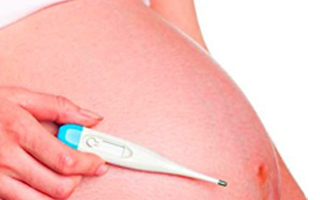 That is why in order to determine whether a temperature of 37 is dangerous during pregnancy, it is necessary to study all the additional information about the patient. This also includes information about concomitant pathology, because the presence of subfebrile condition caused by such a pathology as, for example, chronic pyelonephritis, can be a big complication for the development of pregnancy.
That is why in order to determine whether a temperature of 37 is dangerous during pregnancy, it is necessary to study all the additional information about the patient. This also includes information about concomitant pathology, because the presence of subfebrile condition caused by such a pathology as, for example, chronic pyelonephritis, can be a big complication for the development of pregnancy.
As for whether temperature 38 is dangerous during pregnancy, here the approaches are somewhat different. The answers are always yes. They are due to the fact that at this level of hyperthermia, the following pathology can be noted:
- violation of the organs and systems of the fetus;
- malfunctions in the cardiovascular system of a woman, unsafe for her and leading to a decrease in blood flow to the placenta, which can affect premature birth.
Thus, the temperature over 38 degrees in pregnant women is definitely subject to correction. It is necessary to try to do this by physical methods, increasing the heat transfer of the body. Usually these measures are enough to reduce the temperature by 0.5 - 1 degree.
If this did not happen, and the temperature rises, the woman's condition worsens, it is necessary to consult with a specialist to make a decision on taking antipyretic drugs or prescribing treatment aimed at the cause of the disease.
A dangerous temperature for humans is 38 degrees and above. In children prone to convulsive syndrome, with a pathology of the central nervous system, this limit is much lower and is due to the general condition of the child, the presence of white or red hyperthermia.
In pregnant women, an increase in temperature to 37.8 degrees is already a reason for carrying out physical measures aimed at reducing it.
Most parents simply panic if their child has a fever. There can be many reasons for this condition, but you need to understand: fever signals that the body is trying to cope with some kind of infection. If the indicators increase slightly, then you should not worry, but with sharp jumps up, you should know how dangerous a high temperature in a child is and what to do in such cases.
The mechanism of increasing body temperature
When foreign microorganisms or viruses penetrate into the body of a child, and an adult, too, a response is observed in the form of stimulation of the release of leukocytes, which immediately begin to destroy the pathogens. At the same time, the substance interleukin is produced. It enters the bloodstream, reaches the center of thermoregulation in the brain, which is responsible for raising the temperature.
The hypothalamus perceives such information as a signal that the child is cold, and begins to eliminate this problem. For this, the vessels are narrowed so that the heat does not go out, so the body temperature rises. This may explain why the child has cold hands and feet at high temperatures.
Under the influence of high temperature, viruses and bacteria die, and the fever passes to the next stage - the baby begins to sweat a lot. Gradually, with the death of pathogenic microorganisms, the amount of interleukin decreases and the effect on the center of thermoregulation ceases. The temperature drops to its normal values. The body thus copes with the infection, but what is the danger of a high temperature in a child? What consequences can it lead to?
norms in children
In early childhood, the body is less tolerated by the body, therefore, during illness, parents must constantly observe the baby, note his condition, monitor his behavior, and periodically measure the temperature. All doctors recommend during this period to provide the child with peace, both physical and mental.
Mothers must know why high fever is dangerous, what kind of help should be given to their child. But it should be noted that at different ages there are peculiarities of increased body temperature:
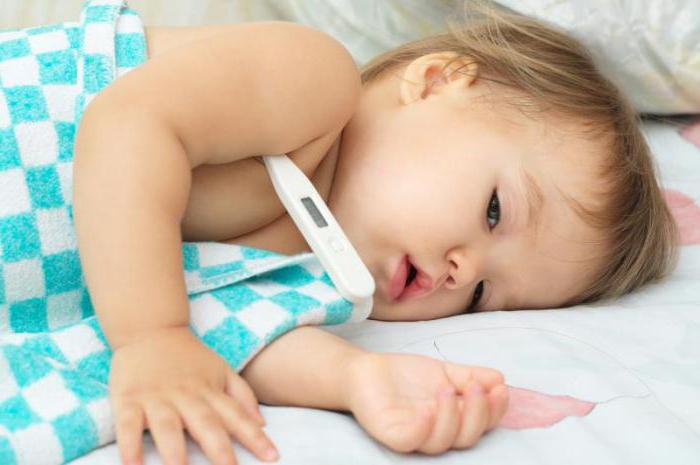
Temperature rise provocateurs
Before you panic and look for an answer to the question of why high body temperature is dangerous, you need to find out why it can rise:
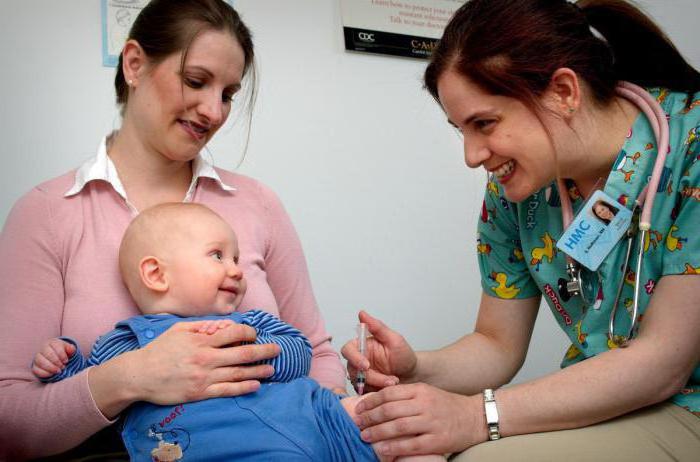
We measure the temperature correctly
Quite often, mothers try to measure body temperature by placing their lips or hand on the baby's forehead. But tactile sensations do not always give an accurate idea of \u200b\u200bthe child's condition, so it is better to use a special device, that is, a thermometer.
They now come in various modifications and varieties. Most are accustomed to using a mercury device, but now electronic devices are becoming more and more popular. They are, of course, more secure, but they may not always show the values \u200b\u200baccurately.
The accuracy of the measurements depends on the location where the body temperature is measured, as well as on the correctness of the process. Most often, in a child and an adult, the temperature is measured in the armpit, but this can be done in the mouth or in the groin fold, for example, in infants.
It is necessary to hold the thermometer for at least 8-10 minutes to get accurate readings. It should be borne in mind that, purely physiologically, even in a healthy person, the temperature in the morning is slightly lower than in the evening. 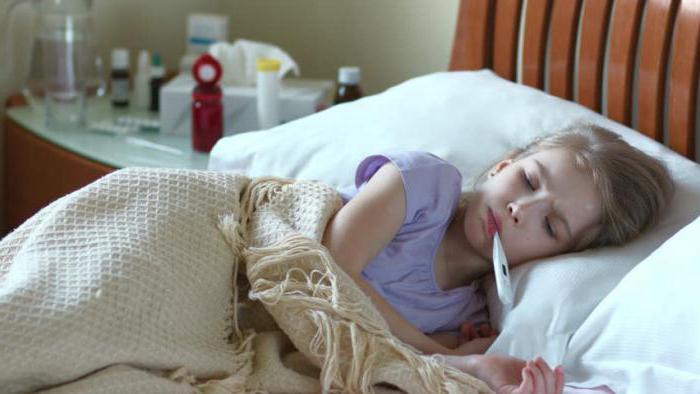
Dangerous temperature for a child
To answer the question, what is the danger of high temperature in children, it is necessary to find out, and what indicators can be considered as such. Quite often, you can see when parents try to immediately give the child an antipyretic agent, as soon as the readings on the thermometer have exceeded 37. But this is not at all justified, because when viral infections this is the only way for the body to overcome the disease, since antibacterial agents will not work.
But with some indicators, it is still worth helping the baby, parents should know how dangerous a high temperature in a child is, if it is not brought down for a long time. Let's find out what the danger is and when it is necessary to use medicines to lower the temperature.
It all depends on the age of the child. For example, in infants, thermoregulation is imperfect, therefore, for them, indicators in the range of 36.6-37.2 are considered the norm, if there are no other signs of the disease. When overheating, the temperature can rise to 38 degrees, but if it does not drop for more than 4 days, then you should see a doctor. This may be evidence of low immunity or the presence of a hidden infection in the body.
In children with vegetative-vascular dystonia, a slight increase in temperature can also be observed against the background of a complete absence of any signs.
If there is a viral or bacterial infection, then the indicators of 38-39 degrees are the temperature at which the active death of pathogens occurs. Is a high temperature dangerous in a child in such a situation? The doctor will most often answer in the negative, but the mother will recommend to monitor the condition more closely.
But if the indicators are rapidly creeping up, then you need to urgently call an ambulance. Why the temperature rise above 40 is dangerous, we will analyze further.
Danger of high temperature
If the indicators on the thermometer have reached 40 degrees, then the baby needs urgent help, it is only advisable to consult a doctor, because some drugs may be contraindicated in such cases. Let's take a look at why temperatures above 40 are life-threatening:
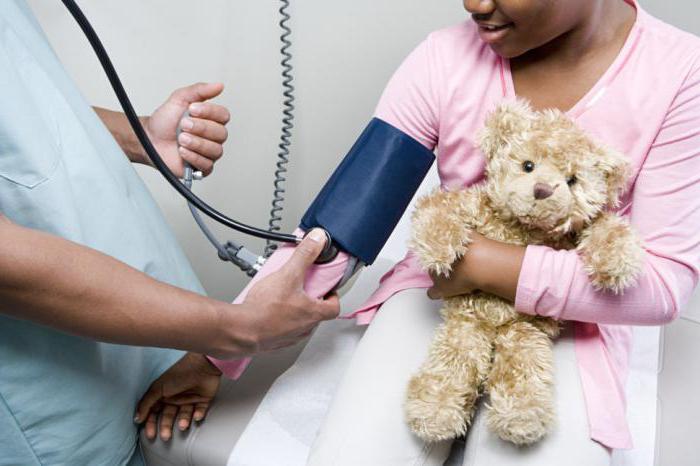
This is why temperatures above 40 degrees are dangerous. Of course, the indications for bringing down the temperature can be individual in each case - sometimes even 38 degrees may require the use of drugs.
For whom is high temperature the most dangerous?
Each organism has its own individual characteristics, some tolerate infectious diseases against the background of an almost insignificant increase in temperature, and in other children, even teething is accompanied by a jump of up to 40 degrees. But, according to experts, there is a category of children for whom a strong fever is especially dangerous:
- If a serious cardiovascular disease is diagnosed.
- There are pathologies of the pulmonary system.
- In babies under the age of five, as there is a great risk of developing febrile seizures. Especially if these have already been observed during the temperature.
- There are disturbances in the functioning of the nervous system.
- The presence of diabetes mellitus or other diseases associated with disruption of the endocrine system.
If the child is often sick with a high fever, then the parents should consult with a doctor in advance about helping him in such a situation.
We provide assistance to a child at high temperatures
Why a temperature above 40 is dangerous is understandable, but how to provide first aid to a child before a doctor arrives? Here are some guidelines:
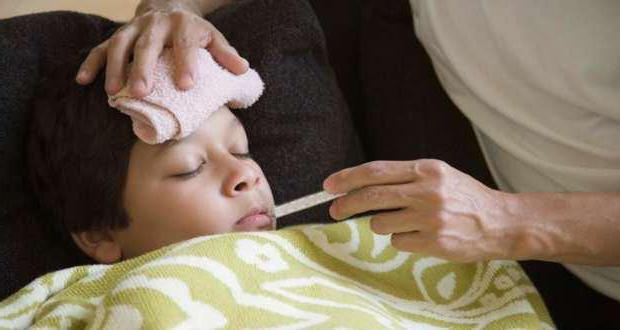
Only drugs approved for children can be used to bring down the temperature. The dosage and duration of admission should be discussed with your doctor.
Komarovsky on the first actions of parents at a high temperature in a child
We have already figured out why a high temperature in a child is dangerous. Komarovsky believes that the most important thing at this time is to provide conditions under which the body will lose excess heat. Considering that heat loss occurs in two ways - when the air in the lungs is warmed up or during sweating, a popular doctor recommends the following actions for children with heat:
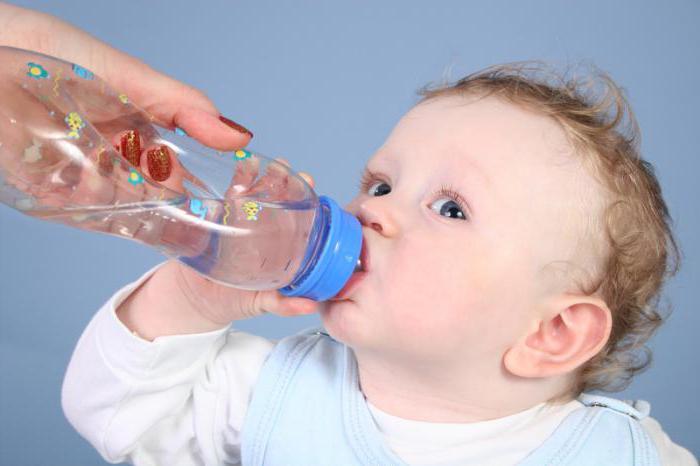
As a drink, you can use not only ordinary water, but also fruit drinks, dried fruit compote.
When to help a child
If the child has reached the age of five, then you can not bring down the temperature to 39 degrees, if there is no indication for urgent help. With babies, things are a little different. If the thermometer is already 38, then you will have to resort to the help of a nursing baby when:
- He has cold hands and feet.
- The skin became pale.
- The child is too capricious.
- Mom noticed apathy or inappropriate behavior.
- Refuses breast or bottle.
It is clear that moms are ready to do anything to help their baby, but some things simply cannot be done if the child has a high temperature:
- It is contraindicated to rub the child with an alcohol solution, since such a procedure only expands the vessels even more, which in this state are already dilated. In addition, the baby is poisoned with alcohol.
- If the temperature does not go astray, it is better to call a doctor, but it is categorically impossible to give Aspirin. It can cause kidney damage and internal bleeding.
- It is not recommended to wrap the child in wet and cold sheets, apply cold heating pads, as this only lowers the temperature of the skin, but inside it remains high, and this is already dangerous.
- A ventilator should not be used to lower body temperature.
It turns out that not all is good when it comes to high fever in a child. Some may even be dangerous!
When to take medications
Indications for taking antipyretics are the following situations:
- The child does not tolerate heat very well.
- Baby high risk development of seizures.
- The readings on the thermometer exceed 39 degrees.
Parents should be aware that in children's practice it is recommended to use only Ibuprofen or Parcetamol. Forbidden in the treatment of children "Analgin", it can provoke anaphylactic shock, liver and kidney damage.
The use of drugs such as "Phenacetin" and "Amidoprine" is fraught with toxic reactions. The dosage of even approved drugs should be adjusted according to the weight and age of the child.
Conclusion
In conclusion, I would like to say that before you throw all your strength into the fight against high fever, you need to find out its cause. After all, heat is just a protective reaction of the body, not a disease. Sometimes it is easier to let the body deal with the infection on its own than to stuff the baby with pills. But you must always be ready to help if the indicators on the thermometer creep up sharply.
